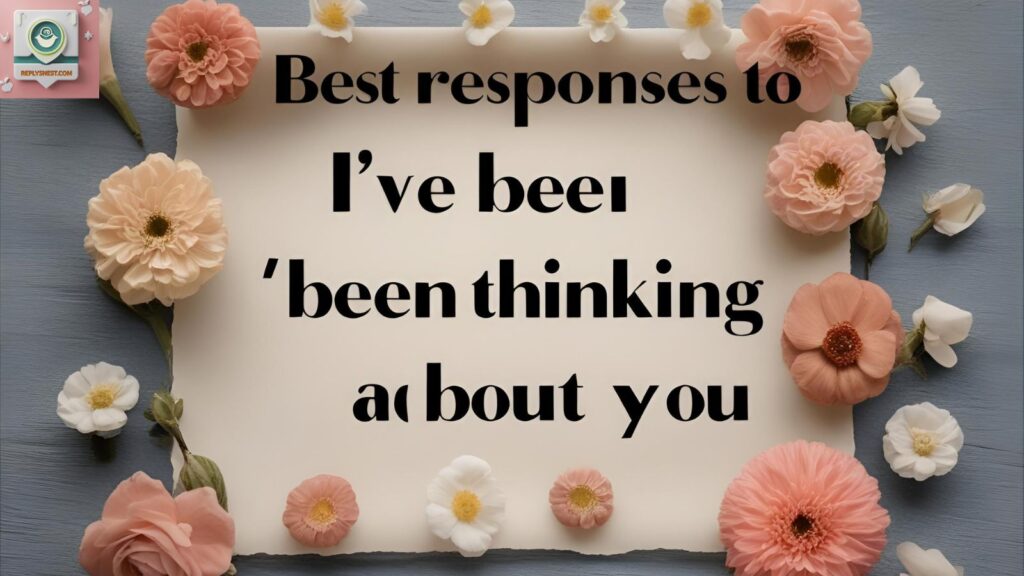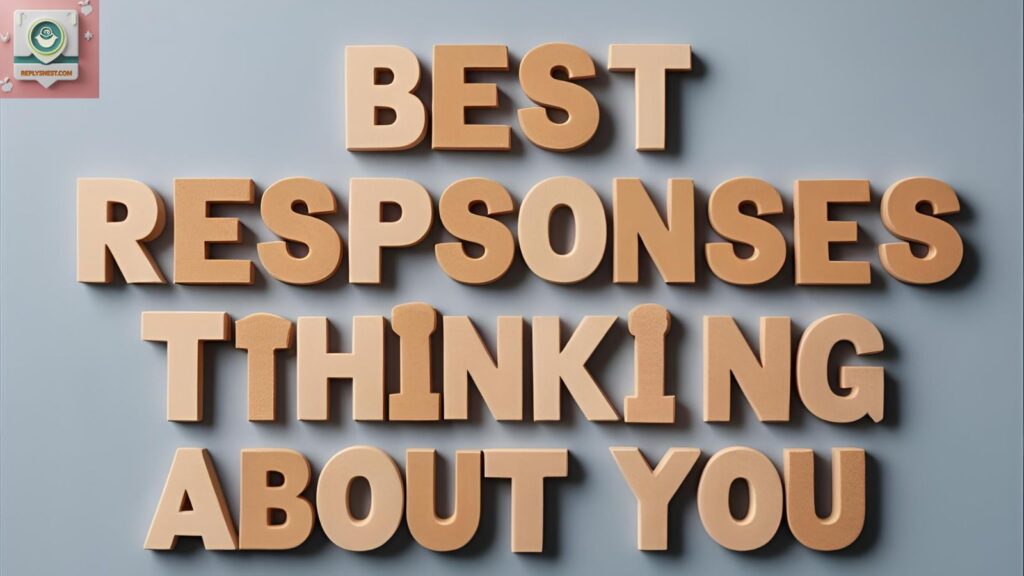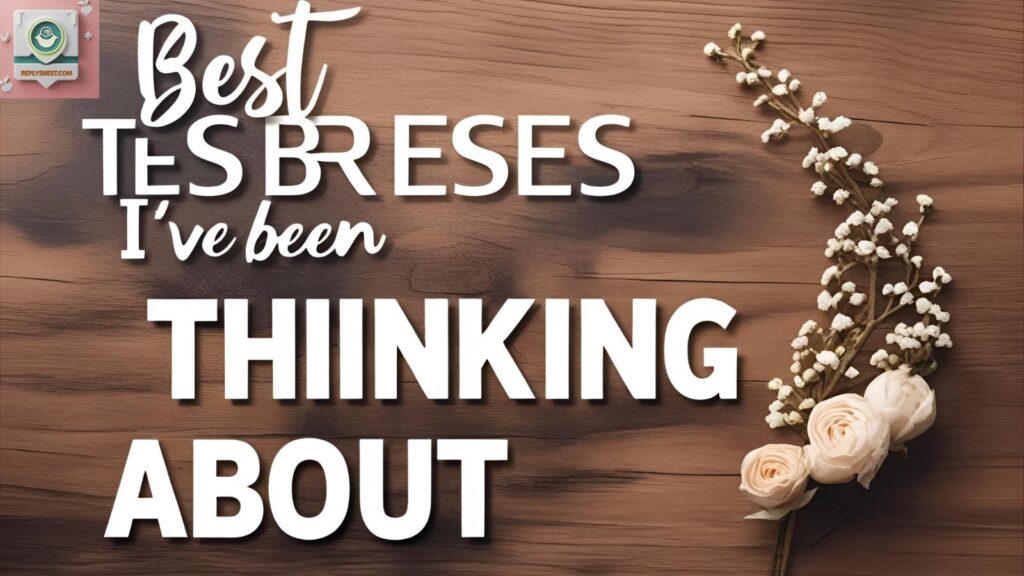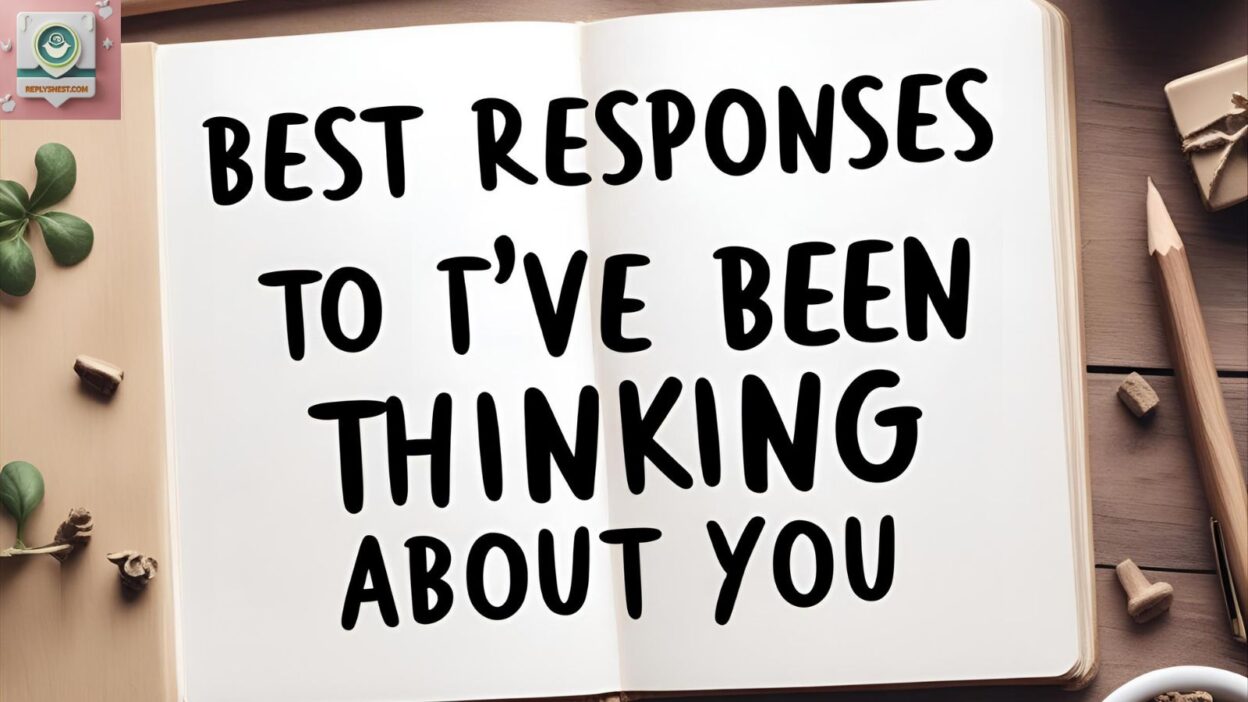Sometimes, I’ve crafted a funny or fun-filled reply over coffee, and other times, a sweet and sincere one that shows genuine affection. You might send a text that’s situation-friendly, a little flirty to ignite desires, or even a playful roast if you share that humor.
Think of it like an assorted collection of versions: a blended mix you can browse through and pick what suits you today. Whether you’re busy trying to survive the week with couch time and snacks or feeling adorable about the coincidence, each phrase can create a sense of connection and belonging.
I once had someone reach out unexpectedly, and my reply made their day because it carried a thoughtful tone with a hint of gratitude. Sometimes, an interactive breakdown of shared memories like reminiscing over old photos can strengthen the bond.
A neutral but heartfelt approach works if you’re not sure about the other person’s feelings. For mutual affection, a complimenting or flattering line shows you value their presence and care about the moment. I’ve found that looking at the important emotional details helps me navigate any daunting task of replying.
Whether light-hearted, positive, or serious, each interaction is a key chance to express and convey appreciation. From the best responses I’ve seen, the important part is staying creative, keeping it fitting for the situation, and remembering that even a summer adventure or pizza chat can continue the connection.
When someone says “I’ve been thinking about you,” it often carries more than just words; it carries emotion, connection, and intent. Whether it’s a friend, an ex, a crush, or someone special, how you reply can deepen a bond or set a respectful boundary. In this article, we’ll explore 30 meaningful, warm, and thoughtful ways to respond that will help you express yourself clearly and genuinely.
You’ll find options for every context romantic, platonic, flirty, or friendly so you’re never caught off guard again. And if you’ve ever been unsure how to react without sounding dry, awkward, or too intense, this guide has you covered.
1. “That means a lot, thank you for thinking of me.”
A gentle and appreciative response that lets the person know their thoughtfulness didn’t go unnoticed.
- Best use: When someone says it sincerely or during a tough time.
- Not to use: If the person is being sarcastic or manipulative.
- Other ways to say it:
- “It warms my heart to hear that.”
- “You have no idea how much that means right now.”
- Example: Them: “I’ve been thinking about you lately.” You: “That honestly means a lot thank you for thinking of me.”
Read More: Funny Ways to Say ‘Oh No’
2. “I’ve been thinking about you too.”

A direct and warm mirror response that keeps the emotional tone balanced.
- Best use: When the feelings are mutual or it’s someone close.
- Not to use: If you’re trying to distance yourself emotionally.
- Other ways to say it:
- “Funny, you’ve been on my mind too.”
- “You’ve crossed my thoughts more than once lately.”
- Example: Them: “I’ve been thinking about you.” You: “I’ve been thinking about you too.”
3. “Anything in particular on your mind?”

This invites conversation and shows genuine curiosity.
- Best use: When you’re open to listening and want to dive deeper.
- Not to use: If you’re feeling emotionally unavailable.
- Other ways to say it:
- “What made you think of me?”
- “I’m curious what brought me to mind?”
- Example: Them: “I’ve been thinking about you.” You: “Anything in particular on your mind?”
4. “Hope those thoughts were good ones!”

A light, slightly humorous response that keeps the tone casual.
- Best use: When you want to acknowledge them playfully.
- Not to use: In emotionally serious or romantic settings.
- Other ways to say it:
- “Were they flattering or scandalous?”
- “Do I need a lawyer, or were they sweet thoughts?”
- Example: Them: “I’ve been thinking about you.” You: “Hope those thoughts were good ones!”
5. “That’s really sweet of you.”
Keeps it kind and respectful, especially for friendly or platonic relationships.
- Best use: When someone reaches out after a while.
- Not to use: If you feel uncomfortable or disinterested.
- Other ways to say it:
- “How thoughtful of you.”
- “That’s kind of you to say.”
- Example: Them: “I’ve been thinking about you lately.” You: “That’s really sweet of you.”
6. “I was wondering how you’ve been too.”
Shows mutual interest and keeps the conversation flowing naturally.
- Best use: For reconnecting with someone from the past.
- Not to use: If you don’t want to reinitiate anything.
- Other ways to say it:
- “You’ve been on my mind as well.”
- “I’ve been meaning to reach out too.”
- Example: Them: “I’ve been thinking about you.” You: “I was wondering how you’ve been too.”
7. “That just made my day.”
A feel-good response perfect for someone special or close.
- Best use: When their message genuinely lifts your spirits.
- Not to use: If you’re indifferent or caught off guard.
- Other ways to say it:
- “You just brightened up my whole week.”
- “I needed to hear that.”
- Example: Them: “I’ve been thinking about you.” You: “That just made my day.”
8. “Is everything okay?”
Sometimes this phrase indicates worry or unresolved feelings.
- Best use: When it feels like something deeper is behind their message.
- Not to use: If you want to avoid emotionally heavy conversations.
- Other ways to say it:
- “Hope everything’s all right.”
- “You good? You sounded a bit nostalgic.”
- Example: Them: “I’ve been thinking about you a lot lately.” You: “Is everything okay?”
9. “I appreciate you reaching out.”
This response works in both casual and formal contexts.
- Best use: When you want to acknowledge the gesture without diving into emotion.
- Not to use: If you’re expecting more emotion or vulnerability.
- Other ways to say it:
- “Thanks for getting in touch.”
- “I’m glad you said that.”
- Example: Them: “I’ve been thinking about you.” You: “I appreciate you reaching out.”
10. “Were your ears burning?”
Fun and flirty, great for romantic or cheeky contexts.
- Best use: When you’ve also been thinking about them.
- Not to use: In professional or formal settings.
- Other ways to say it:
- “We must be telepathic.”
- “I swear I was just about to text you!”
- Example: Them: “I’ve been thinking about you.” You: “Were your ears burning?”
11. “That’s really thoughtful of you.”
A kind acknowledgment with a touch of formality.
- Best use: In respectful, emotionally neutral situations.
- Not to use: When the comment is loaded with emotion and needs depth.
- Other ways to say it:
- “Thanks, that was very considerate.”
- Example: Them: “I’ve been thinking about you.” You: “That’s really thoughtful of you.”
12. “I hope you’re doing okay.”
Shifts the focus toward their wellbeing.
- Best use: If they sound vulnerable or emotional.
- Not to use: When you want to keep it light.
- Other ways to say it:
- “You’ve been on my radar too, how have you been?”
- Example: Them: “I’ve been thinking about you.” You: “I hope you’re doing okay.”
13. “Do tell me more!”
Invites conversation with warmth and curiosity.
- Best use: When you want to build the connection.
- Not to use: If you’re unsure about talking more.
- Other ways to say it:
- “I’d love to hear why.”
- Example: Them: “I’ve been thinking about you.” You: “Do tell me more!”
14. “I was just about to message you.”
Builds synchronicity and chemistry.
- Best use: When it actually feels like a coincidence.
- Not to use: If it’s not true it’ll sound inauthentic.
- Other ways to say it:
- “This timing is kind of perfect.”
- Example: Them: “I’ve been thinking about you.” You: “I was just about to message you.”
15. “That brought a smile to my face.”
Warm, gentle, and appreciative.
- Best use: For friendly, sweet messages.
- Not to use: When you’re unsure how you feel.
- Other ways to say it:
- “You just made me smile.”
- Example: Them: “I’ve been thinking about you.” You: “That brought a smile to my face.”
16. “That’s such an unexpected nice surprise.”
A way to keep things neutral but positive.
- Best use: When someone unexpected says it.
- Not to use: When it’s someone close or expected.
- Other ways to say it:
- “Didn’t see this message coming.”
- Example: Them: “I’ve been thinking about you.” You: “That’s such an unexpected nice surprise.”
17. “Same here. Miss our chats.”
Opens the door to reconnect.
- Best use: When you genuinely miss talking to them.
- Not to use: If you don’t want to rekindle anything.
- Other ways to say it:
- “I’ve missed our convos too.”
- Example: Them: “I’ve been thinking about you.” You: “Same here. Miss our chats.”
18. “Glad I crossed your mind.”
Playful and flirty without going too deep.
- Best use: In casual dating or flirting.
- Not to use: In serious emotional moments.
- Other ways to say it:
- “Good to know I still pop into your thoughts.”
- Example: Them: “I’ve been thinking about you.” You: “Glad I crossed your mind.”
19. “Aw, how come?”
Simple and sincere, inviting more detail.
- Best use: When you’re comfortable getting personal.
- Not to use: When you want to avoid deep convo.
- Other ways to say it:
- “What made you think of me?”
- Example: Them: “I’ve been thinking about you.” You: “Aw, how come?”
20. “You’ve been on my mind too.”
Warm and emotionally reciprocal.
- Best use: When you share their sentiment.
- Not to use: When you don’t feel the same.
- Other ways to say it:
- “You’ve been in my thoughts too.”
- Example: Them: “I’ve been thinking about you.” You: “You’ve been on my mind too.”
21. “That’s really comforting to hear.”
This response adds an emotional layer, especially if you’re feeling vulnerable or going through something.
- Best use: When the person’s message offers emotional support or reassurance.
- Not to use: If the context is flirty or casual and you don’t want to over-personalize.
- Other ways to say it:
- “That brought me some peace, honestly.”
- “It’s nice knowing someone’s thinking about me.”
- Example: Them: “I’ve been thinking about you.” You: “That’s really comforting to hear.”
22. “You always know how to show up at the right time.”
Perfect when their message seems to arrive exactly when you needed it.
- Best use: When it genuinely feels like the timing was uncanny.
- Not to use: If the message came out of nowhere and feels awkward or forced.
- Other ways to say it:
- “Your timing is always on point.”
- “It’s like you knew I needed this.”
- Example: Them: “I’ve been thinking about you lately.” You: “You always know how to show up at the right time.”
23. “Now you’ve got me curious.”
This flirty or playful reply invites further conversation while keeping the mood light.
- Best use: When you’re open to playful or deeper dialogue and want them to continue.
- Not to use: If you’re not ready to re-engage or feel uncomfortable.
- Other ways to say it:
- “Okay… I’m intrigued.”
- “You can’t just drop that and disappear!”
- Example: Them: “I’ve been thinking about you.” You: “Now you’ve got me curious.”
24. “Thanks, I needed that today.”
Acknowledges the emotional impact of their words without over-explaining.
- Best use: When you’re having a rough day or feeling emotionally low.
- Not to use: If their message didn’t affect you much don’t fake it.
- Other ways to say it:
- “You have no idea how much I needed to hear that.”
- “That message came at the perfect time.”
- Example: Them: “I’ve been thinking about you.” You: “Thanks, I needed that today.”
25. “Let’s catch up soon.”
A kind invitation to reconnect, keeping things open and forward-focused.
- Best use: When you want to continue the conversation or rebuild the connection.
- Not to use: If you’re not interested in reconnecting or keeping in touch.
- Other ways to say it:
- “Would love to hear what you’ve been up to.”
- “Let’s find time to talk properly.”
- Example: Them: “I’ve been thinking about you.” You: “Let’s catch up soon.”
Conclusion: Be Thoughtful, Be You
When someone says “I’ve been thinking about you,” it’s not just a line it’s an opening. Your response can welcome warmth, set boundaries, or build a deeper bond. The key is to match the tone, understand the context, and respond with authenticity.
From personal experience, the most memorable connections I’ve had came from conversations that started just like this. Whether you’re texting an old friend, responding to an ex, or flirting with someone new, let your response reflect who you are.
Keep it human, keep it kind, and always stay real.



